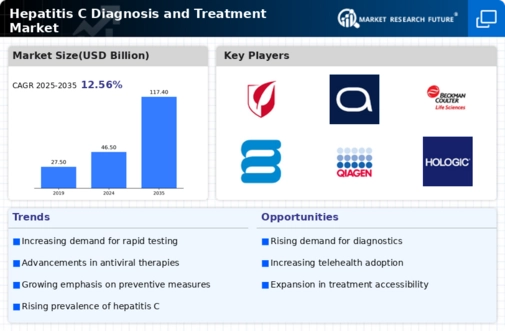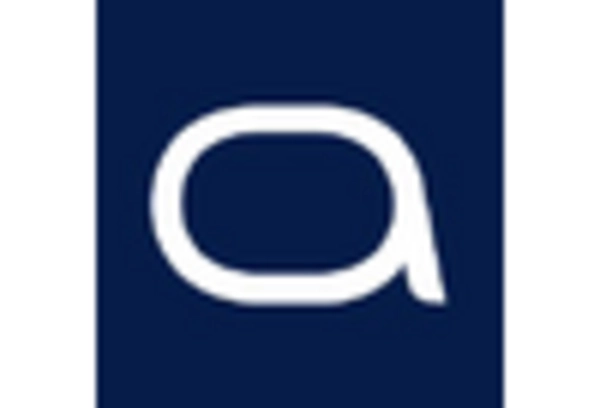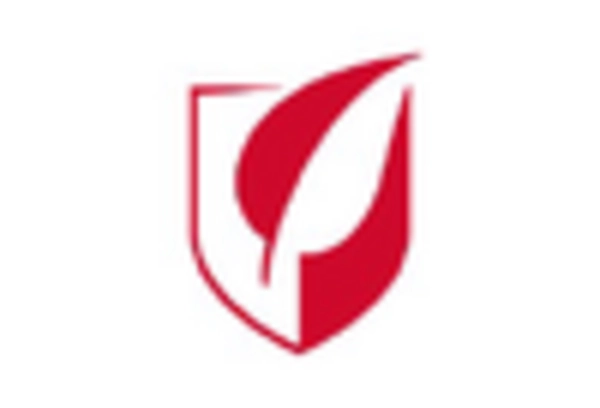-
HEPATITIS C DIAGNOSIS AND TREATMENT MARKET, BY DIAGNOSIS\r\n\r\n6.1. Overview
-
\r\n6.2. Liver
-
Function Tests
-
\r\nMarket
-
Estimates & Forecast, by Region, 2020-2027
-
\r\nMarket Estimates & Forecast, by Country, 2020-2027
-
\r\n6.3. Liver
-
Biopsy
-
\r\nMarket
-
Estimates & Forecast, by Region, 2020-2027
-
\r\nMarket Estimates & Forecast, by Country, 2020-2027
-
\r\n6.4. Blood
-
Tests
-
\r\nMarket
-
Estimates & Forecast, by Region, 2020-2027
-
\r\nMarket Estimates & Forecast, by Country, 2020-2027
-
\r\n6.5. Others
-
\r\nMarket Estimates & Forecast,
-
by Region, 2020-2027
-
\r\nMarket Estimates & Forecast, by Country, 2020-2027
-
\r\n\r\nGLOBAL
-
HEPATITIS C DIAGNOSIS AND TREATMENT MARKET, BY TREATMENT\r\n\r\n7.1. Overview
-
\r\n7.2. Antiviral
-
Medications
-
\r\nMarket
-
Estimates & Forecast, by Region, 2020-2027
-
\r\nMarket Estimates & Forecast, by Country, 2020-2027
-
\r\n7.3. Immuno-Modulators
-
\r\nMarket Estimates & Forecast,
-
by Region, 2020-2027
-
\r\nMarket Estimates & Forecast, by Country, 2020-2027
-
\r\n7.4. Liver
-
Transplantation
-
\r\nMarket
-
Estimates & Forecast, by Region, 2020-2027
-
\r\nMarket Estimates & Forecast, by Country, 2020-2027
-
\r\n7.5. Others
-
\r\nMarket Estimates & Forecast,
-
by Region, 2020-2027
-
\r\nMarket Estimates & Forecast, by Country, 2020-2027
-
\r\n\r\nGLOBAL
-
HEPATITIS C DIAGNOSIS AND TREATMENT MARKET, BY END USER\r\n\r\n8.1. Overview
-
\r\n8.2. Hospitals
-
and Clinics
-
\r\nMarket
-
Estimates & Forecast, by Region, 2020-2027
-
\r\nMarket Estimates & Forecast, by Country, 2020-2027
-
\r\n8.3. Diagnostic
-
Centers
-
\r\nMarket
-
Estimates & Forecast, by Region, 2020-2027
-
\r\nMarket Estimates & Forecast, by Country, 2020-2027
-
\r\n8.4. Others
-
\r\nMarket Estimates & Forecast,
-
by Region, 2020-2027
-
\r\nMarket Estimates & Forecast, by Country, 2020-2027
-
\r\n\r\nGLOBAL
-
HEPATITIS C DIAGNOSIS AND TREATMENT MARKET, BY REGION\r\n\r\n9.1. Overview
-
\r\n9.2. Americas
-
\r\n9.2.1. North
-
America
-
\r\n9.2.1.1.
-
US
-
\r\n9.2.1.2.
-
Canada
-
\r\n9.2.2.
-
Latin America
-
\r\n9.3.
-
Europe
-
\r\n9.3.1.
-
Western Europe
-
\r\n9.3.1.1.
-
Germany
-
\r\n9.3.1.2.
-
France
-
\r\n9.3.1.3.
-
Italy
-
\r\n9.3.1.4.
-
Spain
-
\r\n9.3.1.5.
-
UK
-
\r\n9.3.1.6.
-
Rest of Western Europe
-
\r\n9.3.2. Eastern Europe
-
\r\n9.4. Asia-Pacific
-
\r\n9.4.1. Japan
-
\r\n9.4.2. China
-
\r\n9.4.3. India
-
\r\n9.4.4. Australia
-
\r\n9.4.5. South
-
Korea
-
\r\n9.4.6.
-
Rest of Asia-Pacific
-
\r\n9.5. Middle East & Africa
-
\r\n9.5.1. Middle
-
East
-
\r\n9.5.2.
-
Africa
-
\r\n\r\nCOMPANY LANDSCAPE\r\n\r\n10.1. Overview
-
\r\n10.2. Competitive
-
Analysis
-
\r\n10.3.
-
Market Share Analysis
-
\r\n10.4. Major Growth Strategy in the Global Hepatitis
-
C Diagnosis and Treatment Market
-
\r\n10.5. Competitive Benchmarking
-
\r\n10.6. Leading
-
Players in Terms of the Number of Developments in the Global Hepatitis C Diagnosis
-
and Treatment Market
-
\r\n10.7. Key Developments and Growth Strategies
-
\r\n10.7.1. Product
-
Launch/Service Deployment
-
\r\n10.7.2. Mergers and Acquisitions
-
\r\n10.7.3. Joint
-
Ventures
-
\r\n10.8.
-
Major Players Financial Matrix & Market Ratio
-
\r\n10.8.1. Sales & Operating
-
Income 2020
-
\r\n10.8.2.
-
Major Players R&D Expenditure 2020
-
\r\n10.9. Major Players Capital Market
-
Ratio
-
\r\n\r\nCOMPANY PROFILES\r\n\r\n11.1. F. Hoffmann-La Roche Ltd
-
\r\n11.1.1. Company
-
Overview
-
\r\n11.1.2. Product Overview
-
\r\n11.1.3. Financial
-
Overview
-
\r\n11.1.4.
-
Key Developments
-
\r\n11.1.5. SWOT Analysis
-
\r\n11.1.6. Key
-
Strategies
-
\r\n11.2.
-
Vertex Pharmaceuticals Incorporated
-
\r\n11.2.1. Company Overview
-
\r\n11.2.2. Product
-
Overview
-
\r\n11.2.3. Financial Overview
-
\r\n11.2.4. Key
-
Developments
-
\r\n11.2.5. SWOT Analysis
-
\r\n11.2.6. Key
-
Strategies
-
\r\n11.3.
-
Gilead Sciences, Inc.
-
\r\n11.3.1. Company Overview
-
\r\n11.3.2. Product
-
Overview
-
\r\n11.3.3. Financial Overview
-
\r\n11.3.4. Key
-
Developments
-
\r\n11.3.5. SWOT Analysis
-
\r\n11.3.6. Key
-
Strategies
-
\r\n11.4.
-
AbbVie Inc.
-
\r\n11.4.1.
-
Company Overview
-
\r\n11.4.2.
-
Product Overview
-
\r\n11.4.3. Financial Overview
-
\r\n11.4.4. Key
-
Developments
-
\r\n11.4.5. SWOT Analysis
-
\r\n11.4.6. Key
-
Strategies
-
\r\n11.5.
-
GlaxoSmithKline plc
-
\r\n11.5.1. Company Overview
-
\r\n11.5.2. Product
-
Overview
-
\r\n11.5.3. Financial Overview
-
\r\n11.5.4. Key
-
Developments
-
\r\n11.5.5. SWOT Analysis
-
\r\n11.5.6. Key
-
Strategies
-
\r\n11.6.
-
Novartis Pharmaceuticals Corporation
-
\r\n11.6.1. Company Overview
-
\r\n11.6.2. Product
-
Overview
-
\r\n11.6.3. Financial Overview
-
\r\n11.6.4. Key
-
Developments
-
\r\n11.6.5. SWOT Analysis
-
\r\n11.6.6. Key
-
Strategies
-
\r\n11.7.
-
Bristol-Myers Squibb Company
-
\r\n11.7.1. Company Overview
-
\r\n11.7.2. Product
-
Overview
-
\r\n11.7.3. Financial Overview
-
\r\n11.7.4. Key
-
Developments
-
\r\n11.7.5. SWOT Analysis
-
\r\n11.7.6. Key
-
Strategies
-
\r\n11.8.
-
Abbott.
-
\r\n11.8.1.
-
Company Overview
-
\r\n11.8.2.
-
Product Overview
-
\r\n11.8.3. Financial Overview
-
\r\n11.8.4. Key
-
Developments
-
\r\n11.8.5. SWOT Analysis
-
\r\n11.8.6. Key
-
Strategies
-
\r\n11.9.
-
Beckman Coulter, Inc.
-
\r\n11.9.1. Company Overview
-
\r\n11.9.2. Product
-
Overview
-
\r\n11.9.3. Financial Overview
-
\r\n11.9.4. Key
-
Developments
-
\r\n11.9.5. SWOT Analysis
-
\r\n11.9.6. Key
-
Strategies
-
\r\n11.10.
-
Siemens Medical Solutions USA, Inc.
-
\r\n11.10.1. Company Overview
-
\r\n11.10.2.
-
Product Overview
-
\r\n11.10.3. Financial Overview
-
\r\n11.10.4.
-
Key Developments
-
\r\n11.10.5. SWOT Analysis
-
\r\n11.10.6.
-
Key Strategies
-
\r\n11.11.
-
MedMira Inc.
-
\r\n11.11.1.
-
Company Overview
-
\r\n11.11.2.
-
Product Overview
-
\r\n11.11.3. Financial Overview
-
\r\n11.11.4.
-
Key Developments
-
\r\n11.11.5. SWOT Analysis
-
\r\n11.11.6.
-
Key Strategies
-
\r\n11.12.
-
DiaSorin SpA
-
\r\n11.12.1.
-
Company Overview
-
\r\n11.12.2.
-
Product Overview
-
\r\n11.12.3. Financial Overview
-
\r\n11.12.4.
-
Key Developments
-
\r\n11.12.5. SWOT Analysis
-
\r\n11.12.6.
-
Key Strategies
-
\r\n11.13.
-
Qiagen
-
\r\n11.13.1.
-
Company Overview
-
\r\n11.13.2.
-
Product Overview
-
\r\n11.13.3. Financial Overview
-
\r\n11.13.4.
-
Key Developments
-
\r\n11.13.5. SWOT Analysis
-
\r\n11.13.6.
-
Key Strategies
-
\r\n11.14.
-
bioMérieux SA
-
\r\n11.14.1. Company Overview
-
\r\n11.14.2.
-
Product Overview
-
\r\n11.14.3. Financial Overview
-
\r\n11.14.4.
-
Key Developments
-
\r\n11.14.5. SWOT Analysis
-
\r\n11.14.6.
-
Key Strategies
-
\r\n11.15.
-
Hologic, Inc.
-
\r\n11.15.1.
-
Company Overview
-
\r\n11.15.2.
-
Product Overview
-
\r\n11.15.3. Financial Overview
-
\r\n11.15.4.
-
Key Developments
-
\r\n11.15.5. SWOT Analysis
-
\r\n11.15.6.
-
Key Strategies
-
\r\n11.16.
-
Bio-Rad Laboratories, Inc.
-
\r\n11.16.1. Company Overview
-
\r\n11.16.2.
-
Product Overview
-
\r\n11.16.3. Financial Overview
-
\r\n11.16.4.
-
Key Developments
-
\r\n11.16.5. SWOT Analysis
-
\r\n11.16.6.
-
Key Strategies
-
\r\n11.17.
-
Others
-
\r\n\r\nAPPENDIX\r\n\r\n12.1. References
-
\r\n12.2. Related
-
Reports
-
\r\n
-
\r\nLIST OF TABLES
-
\r\nTABLE 1 GLOBAL
-
HEPATITIS C DIAGNOSIS AND TREATMENT MARKET SYNOPSIS, 2020-2027
-
\r\nTABLE 2 GLOBAL
-
HEPATITIS C DIAGNOSIS AND TREATMENT MARKET ESTIMATES & FORECAST, 2020-2027 (USD
-
MILLION)
-
\r\nTABLE 3 GLOBAL HEPATITIS C DIAGNOSIS
-
AND TREATMENT MARKET, BY DIAGNOSIS, 2020-2027 (USD MILLION)
-
\r\nTABLE 4 GLOBAL
-
HEPATITIS C DIAGNOSIS AND TREATMENT MARKET, BY TREATMENT, 2020-2027 (USD MILLION)
-
\r\nTABLE 5 GLOBAL
-
HEPATITIS C DIAGNOSIS AND TREATMENT MARKET, BY END USER, 2020-2027 (USD MILLION)
-
\r\nTABLE 6 GLOBAL
-
HEPATITIS C DIAGNOSIS AND TREATMENT MARKET, BY REGION, 2020-2027 (USD MILLION)
-
\r\nTABLE 7 NORTH
-
AMERICA: HEPATITIS C DIAGNOSIS AND TREATMENT MARKET, BY DIAGNOSIS, 2020-2027 (USD
-
MILLION)
-
\r\nTABLE 8 NORTH
-
AMERICA: HEPATITIS C DIAGNOSIS AND TREATMENT MARKET, BY TREATMENT, 2020-2027 (USD
-
MILLION)
-
\r\nTABLE 9 NORTH
-
AMERICA: HEPATITIS C DIAGNOSIS AND TREATMENT MARKET, BY END USER, 2020-2027 (USD
-
MILLION)
-
\r\nTABLE 10
-
US: HEPATITIS C DIAGNOSIS AND TREATMENT MARKET, BY DIAGNOSIS, 2020-2027 (USD MILLION)
-
\r\nTABLE 11
-
US: HEPATITIS C DIAGNOSIS AND TREATMENT MARKET, BY TREATMENT, 2020-2027 (USD MILLION)
-
\r\nTABLE 12
-
US: HEPATITIS C DIAGNOSIS AND TREATMENT MARKET, BY END USER, 2020-2027 (USD MILLION)
-
\r\nTABLE 13 CANADA:
-
HEPATITIS C DIAGNOSIS AND TREATMENT MARKET, BY DIAGNOSIS, 2020-2027 (USD MILLION)
-
\r\nTABLE 14
-
CANADA: HEPATITIS C DIAGNOSIS AND TREATMENT MARKET, BY TREATMENT, 2020-2027 (USD
-
MILLION)
-
\r\nTABLE 15
-
CANADA: HEPATITIS C DIAGNOSIS AND TREATMENT MARKET, BY END USER, 2020-2027 (USD
-
MILLION)
-
\r\nTABLE 16
-
LATIN AMERICA: HEPATITIS C DIAGNOSIS AND TREATMENT MARKET, BY DIAGNOSIS, 2020-2027
-
(USD MILLION)
-
\r\nTABLE 17 LATIN AMERICA: HEPATITIS C DIAGNOSIS AND
-
TREATMENT MARKET, BY TREATMENT, 2020-2027 (USD MILLION)
-
\r\nTABLE 18
-
LATIN AMERICA: HEPATITIS C DIAGNOSIS AND TREATMENT MARKET, BY END USER, 2020-2027
-
(USD MILLION)
-
\r\nTABLE
-
EUROPE: HEPATITIS C DIAGNOSIS AND TREATMENT MARKET, BY DIAGNOSIS,
-
\r\nTABLE 20 EUROPE: HEPATITIS C DIAGNOSIS
-
AND TREATMENT MARKET, BY TREATMENT, 2020-2027 (USD MILLION)
-
\r\nTABLE 21
-
EUROPE: HEPATITIS C DIAGNOSIS AND TREATMENT MARKET, BY END USER, 2020-2027 (USD
-
MILLION)
-
\r\nTABLE 22
-
WESTERN EUROPE: HEPATITIS C DIAGNOSIS AND TREATMENT MARKET, BY DIAGNOSIS, 2020-2027
-
(USD MILLION)
-
\r\nTABLE 23 WESTERN EUROPE: HEPATITIS C DIAGNOSIS AND
-
TREATMENT MARKET, BY TREATMENT, 2020-2027 (USD MILLION)
-
\r\nTABLE 24
-
WESTERN EUROPE: HEPATITIS C DIAGNOSIS AND TREATMENT MARKET, BY END USER, 2020-2027
-
(USD MILLION)
-
\r\nTABLE 25
-
EASTERN EUROPE: HEPATITIS C DIAGNOSIS AND TREATMENT MARKET, BY DIAGNOSIS, 2020-2027
-
(USD MILLION)
-
\r\nTABLE
-
EASTERN EUROPE: HEPATITIS C DIAGNOSIS AND TREATMENT MARKET,
-
BY TREATMENT, 2020-2027 (USD MILLION)
-
\r\nTABLE 27
-
EASTERN EUROPE: HEPATITIS C DIAGNOSIS AND TREATMENT MARKET, BY END USER, 2020-2027
-
(USD MILLION)
-
\r\nTABLE 28
-
ASIA-PACIFIC: HEPATITIS C DIAGNOSIS AND TREATMENT MARKET, BY DIAGNOSIS, 2020-2027
-
(USD MILLION)
-
\r\nTABLE 29 ASIA-PACIFIC: HEPATITIS C DIAGNOSIS AND
-
TREATMENT MARKET, BY TREATMENT, 2020-2027 (USD MILLION)
-
\r\nTABLE 30
-
ASIA-PACIFIC: HEPATITIS C DIAGNOSIS AND TREATMENT MARKET, BY END USER, 2020-2027
-
(USD MILLION)
-
\r\nTABLE 31
-
MIDDLE EAST & AFRICA: HEPATITIS C DIAGNOSIS AND TREATMENT MARKET, BY DIAGNOSIS,
-
\r\nTABLE 32
-
MIDDLE EAST & AFRICA: HEPATITIS C DIAGNOSIS AND TREATMENT MARKET, BY TREATMENT,
-
\r\nTABLE 33
-
MIDDLE EAST & AFRICA: HEPATITIS C DIAGNOSIS AND TREATMENT MARKET, BY END USER,
-
\r\n
-
-
\r\nLIST
-
OF FIGURES
-
\r\nFIGURE
-
RESEARCH PROCESS
-
\r\nFIGURE 2 MARKET STRUCTURE FOR
-
THE GLOBAL HEPATITIS C DIAGNOSIS AND TREATMENT MARKET
-
\r\nFIGURE 3
-
MARKET DYNAMICS FOR THE GLOBAL HEPATITIS C DIAGNOSIS AND TREATMENT MARKET
-
\r\nFIGURE 4
-
GLOBAL HEPATITIS C DIAGNOSIS AND TREATMENT MARKET SHARE, BY DIAGNOSIS, 2020
-
(%)
-
\r\nFIGURE
-
GLOBAL HEPATITIS C DIAGNOSIS AND TREATMENT MARKET SHARE, BY
-
TREATMENT TYPE, 2020 (%)
-
\r\nFIGURE 6 GLOBAL HEPATITIS C DIAGNOSIS
-
AND TREATMENT MARKET SHARE, BY END USER, 2020 (%)
-
\r\nFIGURE 7
-
GLOBAL HEPATITIS C DIAGNOSIS AND TREATMENT MARKET SHARE, BY REGION, 2020 (%)
-
\r\nFIGURE 7
-
AMERICAS: HEPATITIS C DIAGNOSIS AND TREATMENT MARKET SHARE BY REGION, 2020
-
(%)
-
\r\nFIGURE
-
NORTH AMERICA: HEPATITIS C DIAGNOSIS AND TREATMENT MARKET SHARE,
-
BY COUNTRY, 2020 (%)
-
\r\nFIGURE 9 EUROPE: HEPATITIS C DIAGNOSIS
-
AND TREATMENT MARKET SHARE, BY REGION, 2020 (%)
-
\r\nFIGURE 10 WESTERN EUROPE: HEPATITIS
-
C DIAGNOSIS AND TREATMENT MARKET SHARE, BY COUNTRY, 2020 (%)
-
\r\nFIGURE 11
-
ASIA-PACIFIC: HEPATITIS C DIAGNOSIS AND TREATMENT MARKET SHARE, BY COUNTRY, 2020
-
(%)
-
\r\nFIGURE
-
MIDDLE EAST & AFRICA: HEPATITIS C DIAGNOSIS AND TREATMENT
-
MARKET SHARE, BY COUNTRY, 2020 (%)
-
\r\nFIGURE 13
-
GLOBAL HEPATITIS C DIAGNOSIS AND TREATMENT MARKET: COMPANY SHARE ANALYSIS, 2020
-
(%)
-
\r\nFIGURE
-
F. HOFFMANN-LA ROCHE LTD.: KEY FINANCIALS
-
\r\nFIGURE 15
-
F. HOFFMANN-LA ROCHE LTD: SEGMENTAL REVENUE
-
\r\nFIGURE 16 F. HOFFMANN-LA ROCHE
-
LTD: REGIONAL REVENUE
-
\r\nFIGURE 17 VERTEX PHARMACEUTICALS INCORPORATED: KEY
-
FINANCIALS
-
\r\nFIGURE
-
VERTEX PHARMACEUTICALS INCORPORATED: SEGMENTAL REVENUE
-
\r\nFIGURE 19
-
VERTEX PHARMACEUTICALS INCORPORATED: REGIONAL REVENUE
-
\r\nFIGURE 20 GILEAD SCIENCES, INC.:
-
KEY FINANCIALS
-
\r\nFIGURE
-
GILEAD SCIENCES, INC.: SEGMENTAL REVENUE
-
\r\nFIGURE 22
-
GILEAD SCIENCES, INC.: REGIONAL REVENUE
-
\r\nFIGURE 23 ABBVIE INC.: KEY FINANCIALS
-
\r\nFIGURE 24
-
ABBVIE INC.: SEGMENTAL REVENUE
-
\r\nFIGURE 25 ABBVIE INC.: REGIONAL REVENUE
-
\r\nFIGURE 26
-
GLAXOSMITHKLINE PLC: KEY FINANCIALS
-
\r\nFIGURE 27 GLAXOSMITHKLINE PLC:
-
SEGMENTAL REVENUE
-
\r\nFIGURE 28 GLAXOSMITHKLINE PLC: REGIONAL REVENUE
-
\r\nFIGURE 29
-
NOVARTIS PHARMACEUTICALS CORPORATION: KEY FINANCIALS
-
\r\nFIGURE 30 NOVARTIS PHARMACEUTICALS
-
CORPORATION: SEGMENTAL REVENUE
-
\r\nFIGURE 31 NOVARTIS PHARMACEUTICALS CORPORATION:
-
REGIONAL REVENUE
-
\r\nFIGURE
-
BRISTOL-MYERS SQUIBB COMPANY: KEY FINANCIALS
-
\r\nFIGURE 33
-
BRISTOL-MYERS SQUIBB COMPANY: SEGMENTAL REVENUE
-
\r\nFIGURE 34 BRISTOL-MYERS SQUIBB
-
COMPANY: REGIONAL REVENUE
-
\r\nFIGURE 35 ABBOTT.: KEY FINANCIALS
-
\r\nFIGURE 36
-
ABBOTT.: SEGMENTAL REVENUE
-
\r\nFIGURE 37 ABBOTT.: REGIONAL REVENUE
-
\r\nFIGURE 38
-
BECKMAN COULTER, INC.: KEY FINANCIALS
-
\r\nFIGURE 39 BECKMAN COULTER, INC.:
-
SEGMENTAL REVENUE
-
\r\nFIGURE 40 BECKMAN COULTER, INC.: REGIONAL REVENUE
-
\r\nFIGURE 41
-
SIEMENS MEDICAL SOLUTIONS USA, INC.: KEY FINANCIALS
-
\r\nFIGURE 42 SIEMENS MEDICAL SOLUTIONS
-
USA, INC.: SEGMENTAL REVENUE
-
\r\nFIGURE 43 SIEMENS MEDICAL SOLUTIONS USA,
-
INC.: REGIONAL REVENUE
-
\r\nFIGURE 44 MEDMIRA INC.: KEY FINANCIALS
-
\r\nFIGURE 45
-
MEDMIRA INC.: SEGMENTAL REVENUE
-
\r\nFIGURE 46 MEDMIRA INC.: REGIONAL REVENUE
-
\r\nFIGURE 47
-
DIASORIN S.P.A.: KEY FINANCIALS
-
\r\nFIGURE 48 DIASORIN S.P.A.: SEGMENTAL
-
REVENUE
-
\r\nFIGURE
-
DIASORIN S.P.A.: REGIONAL REVENUE
-
\r\nFIGURE 50 QIAGEN: KEY FINANCIALS
-
\r\nFIGURE 51
-
QIAGEN: SEGMENTAL REVENUE
-
\r\nFIGURE 52 QIAGEN: REGIONAL REVENUE
-
\r\nFIGURE 53
-
BIOMÉRIEUX SA: KEY FINANCIALS
-
\r\nFIGURE 54 BIOMÉRIEUX SA:
-
SEGMENTAL REVENUE
-
\r\nFIGURE 55 BIOMÉRIEUX SA: REGIONAL REVENUE
-
\r\nFIGURE 56
-
HOLOGIC, INC.: KEY FINANCIALS
-
\r\nFIGURE 57 HOLOGIC, INC.: SEGMENTAL REVENUE
-
\r\nFIGURE 58
-
HOLOGIC, INC.: REGIONAL REVENUE
-
\r\nFIGURE 59 BIO-RAD LABORATORIES, INC.:
-
KEY FINANCIALS
-
\r\nFIGURE
-
BIO-RAD LABORATORIES, INC.: SEGMENTAL REVENUE
-
\r\nFIGURE 61
-
BIO-RAD LABORATORIES, INC.: REGIONAL REVENUE









Leave a Comment